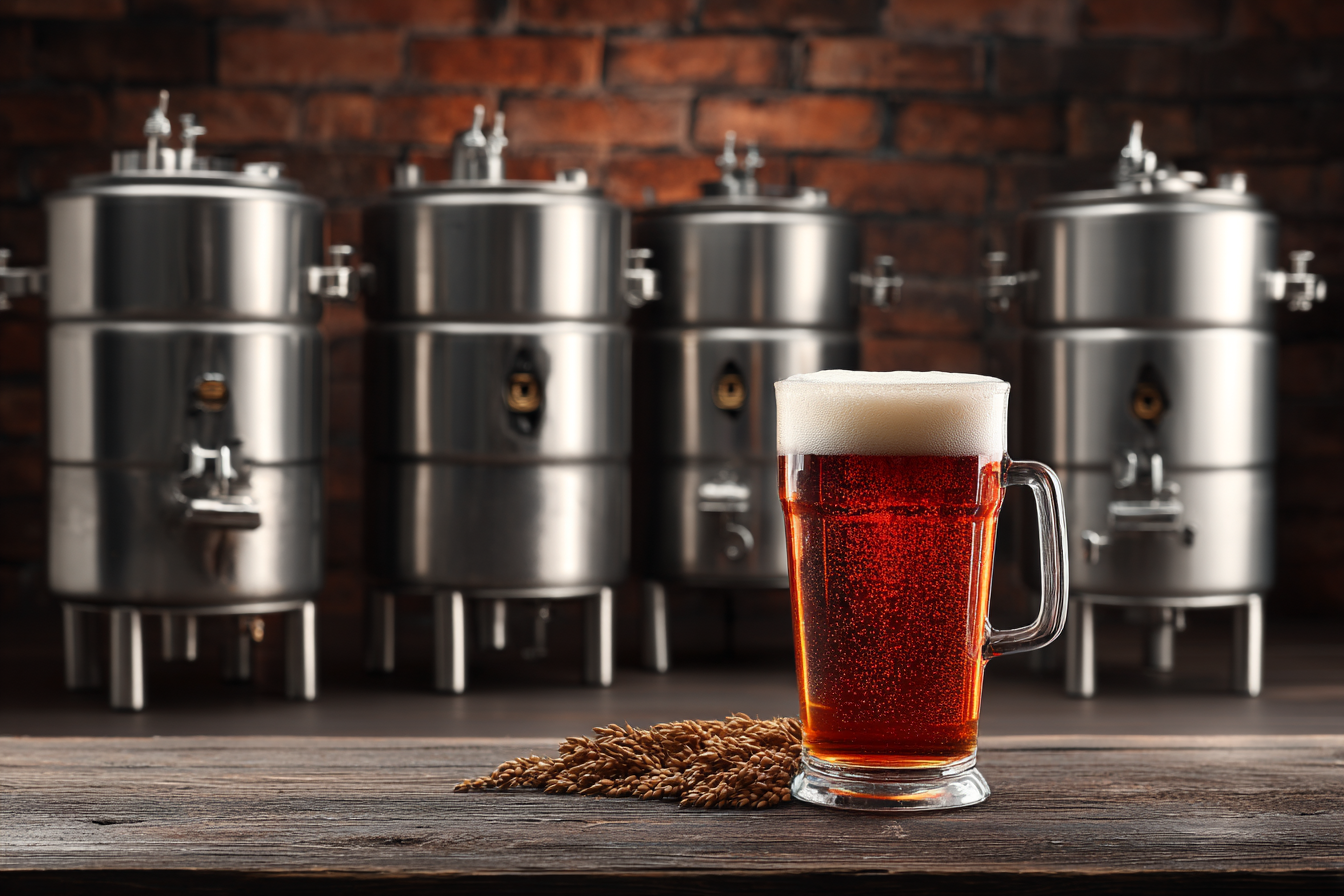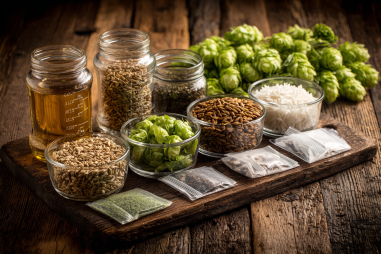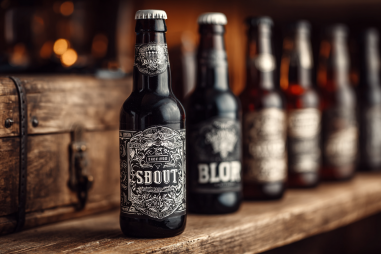Brewing your own American Light Lager at home can be an incredibly rewarding experience. Known for its crisp, clean taste and refreshing qualities, this popular beer style is a favorite for many beer lovers. Whether you’re a novice or a more experienced homebrewer, having the right equipment tailored to American Light Lager brewing is essential for achieving great results. From essential starter gear to advanced tools that help maintain consistency and quality, this guide covers everything you need to know to set up your homebrewing space for success.
Basic Equipment for Beginners
If you’re just starting out on your brewing journey, simplicity and ease of use are key. Homebrewing American Light Lager doesn’t require overly complex tools to get started. Here’s a list of the basic equipment every beginner should have:
- Brewing Kettle: A large pot, usually between 5 to 7 gallons, made from stainless steel or food-grade aluminum. This is where you’ll boil your wort.
- Fermenter: Typically a plastic bucket or a glass carboy equipped with an airlock. This vessel allows the wort to ferment and turn into beer.
- Airlock and Stopper: Used to let CO2 escape during fermentation while preventing outside contaminants from entering.
- Hydrometer: Essential for measuring the specific gravity of your wort before and after fermentation, which helps determine alcohol content and fermentation progress.
- Sanitizer: Proper sanitation is crucial. Products like Star San are popular for keeping all your equipment bacteria-free.
- Siphon or Racking Cane: Used for transferring beer without disturbing sediment.
- Bottles and Caps or Kegs: For packaging your finished brew so it can carbonate and be enjoyed.
- Thermometer: For monitoring mash temperatures or fermentation environment.
This basic setup allows you to brew a quality American Light Lager with minimal investment and complexity but still delivers rewarding results.
Advanced Gear for Consistent Quality
Once you’ve mastered the basics, upgrading or adding advanced brewing equipment can help improve the consistency and quality of your American Light Lager. Precision is key when making this clean and crisp style, so enhanced control over your process is beneficial. Consider investing in the following:
- Electric Brewing System or All-in-One Brewing Machines: These units automate key steps such as heating and temperature control, reducing human error.
- Conical Fermenter: These vessels allow you to easily separate sediment from beer, improving clarity and simplifying harvesting yeast for future brewing.
- Temperature-Controlled Fermentation Chamber: Lager yeasts require cool, steady temperatures usually between 45°F to 55°F. A fermentation chamber with a temperature controller ensures your beer ferments in ideal conditions.
- pH Meter: Monitoring mash pH helps optimize enzyme activity, which affects sugar extraction and ultimately the profile of your beer.
- Refractometer: Useful for quick gravity readings with a tiny wort sample, speeding up your brewing workflow.
Adopting these advanced tools will help you dial in the crisp, clean character typical of American Light Lager and raise the bar on your homebrewing standards.
Importance of Temperature Control Tools
Temperature control is vital when brewing American Light Lager. Unlike ales, lagers require fermenting at lower temperatures, making the right tools indispensable for success.
During mashing and boiling, maintaining steady temperatures ensures proper enzyme activation and effective wort extraction. After boiling, during fermentation:
- Lager yeast strains work best between 45°F and 55°F (7°C – 13°C), significantly cooler than ale yeasts.
- Temperature fluctuations can cause off-flavors that compromise the beer’s clean taste.
To meet these requirements, many homebrewers use:
- Temperature-controlled refrigerators or freezers: Equipped with an external temperature controller to maintain precise temps.
- Heating pads or wraps: Sometimes coupled with fermentation chambers to prevent temperatures from dropping too low.
- Accurate digital thermometers: For continuously monitoring both mash and fermentation temps.
Having reliable temperature control tools is one of the most effective ways to consistently brew authentic, refreshing American Light Lagers.
Fermentation Vessels and Storage
The choice of fermentation vessel impacts both the quality of your beer and ease of brewing when making American Light Lager at home.
- Plastic fermenters: Affordable and lightweight, plastic buckets are great for beginners. However, they scratch easily and can harbor bacteria if not properly maintained.
- Glass carboys: Non-porous and easy to clean, glass offers better sanitation but is heavier and can break if mishandled.
- Stainless steel fermenters: Preferred by advanced brewers due to durability, ease of cleaning, and better temperature control. Many come with built-in temperature jackets.
- Conical fermenters: Popular for their ability to separate yeast and trub from the beer, leading to clearer final product and simplified transfers.
When it comes to storage, keeping the beer at optimal temperatures during fermentation and conditioning is important. Proper lockers, coolers, or temperature-controlled fermentation chambers will protect your beer during these critical phases.
Cleaning and Sanitation Equipment
Cleanliness is where good beer starts. Neglecting proper cleaning and sanitation can introduce bacteria or wild yeast, ruining your batch—especially delicate styles like American Light Lager.
Essential cleaning and sanitation items include:
- Cleaning Brushes and Pads: Different sizes and shapes to reach all parts of your equipment.
- Food-Grade Cleaning Agents: Products designed to remove organic residues without leaving harmful residues.
- Sanitizing Solutions: No-rinse sanitizers like Star San or Iodophor to maintain a sterile environment.
- Equipment Organizer: To keep all cleaning tools separate and accessible, preventing cross-contamination.
Regular and thorough cleaning, followed by effective sanitation of all brewing surfaces and containers, is non-negotiable for every successful homebrewer.
Tips for Selecting and Maintaining Equipment
Choosing the right brewing equipment requires a balance between budget, brewing goals, and available space. Here are some helpful tips to keep in mind:
- Start small and upgrade as you grow: Begin with a beginner kit suitable for your needs, then invest in advanced gear once you’re comfortable.
- Prioritize stainless steel where possible: It’s more durable and easier to clean than plastic.
- Choose equipment with good reviews: Look for trusted brands and models recommended by homebrewing communities.
- Keep detailed notes on your equipment usage and maintenance: Regular inspection helps avoid mishaps like leaks or contamination.
- Sanitize every part that contacts wort or beer: Even small contaminants can spoil a batch.
- Store your equipment properly: Keep fermenters sealed and parts clean and dry between brews to prolong lifespan.
By carefully selecting and maintaining your brewing equipment, you’ll enjoy a smoother and more successful brewing process for your American Light Lager.
Setting Up Your Brewing Space for Success
Creating an efficient, organized brewing space sets the tone for enjoyable homebrewing sessions and excellent beer results. Consider these factors when arranging your home brewery:
- Plenty of counter space and a sturdy surface for assembling your equipment and working comfortably.
- Easy access to clean water and drainage for filling and cleaning vessels.
- Climate control or a dedicated fermentation fridge/freezer to maintain ideal fermentation temps.
- Proper lighting to help you monitor every step closely.
- Storage for ingredients such as malt extracts, hops, yeast, and additives in a cool, dry place.
- Waste disposal area for spent grains and cleaning waste.
Organizing your space for smooth workflow and cleanliness enhances your brewing experience and helps you produce consistent, high-quality American Light Lagers every time.
Brewing American Light Lager at home is an exciting project that combines science, art, and a little patience. By equipping yourself with both basic and advanced brewing tools, focusing on temperature control and sanitation, carefully selecting fermentation vessels, and creating an organized brewing environment, you set yourself up for steady success. Whether you’re looking to impress friends or simply enjoy the satisfaction of crafting your own refreshing lager, the right equipment is your best partner along the way.







